
Have you ever thought about how important a reliable hiking backpack is for your outdoor journeys? It’s just like a dependable friend accompanying you, sharing the load (quite literally!), and making your trek enjoyable. Choose poorly, and you might end up with an aching back or a bag that gives up on you mid-trip. But with the right choice, you’ll have a sturdy companion that helps create an unforgettable outdoor experience!
That’s why we’re here today. We’re going to explore the ins and outs of backpacks for hiking and trekking. We’ll cover everything from understanding different backpack types to selecting the perfect fit, packing it like a pro, and maintaining it for longevity. So, strap in and get ready for a comprehensive crash course in backpacks!
Understanding Hiking Backpack Types
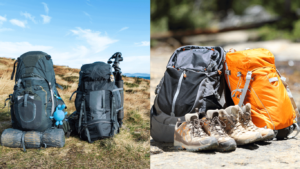
Knowing the variety of backpacks available is the first step in making an informed choice. Let’s dive deeper into the types of backpacks out there, their uses, and key features.
Daypacks: Definition, Uses, and Key Features
Daypacks are the casual strollers of the backpack world. They’re designed for short trips like day hikes, casual city tours, or quick jaunts into the wilderness. These packs typically have a capacity ranging from 10 to 30 liters, making them compact yet capable.
Key features of daypacks include lightweight construction and easy accessibility. They often come with a few handy compartments for your essentials, like a main compartment for clothing and food, a smaller front pocket for items like keys and sunglasses, and side pockets for water bottles or snacks. Some also feature hydration reservoirs, so you can take a sip without stopping your trek. Remember, though, daypacks aren’t usually built for heavy-duty wear and tear or for carrying substantial weight.
Multi-Day Packs: Definition, Uses, and Key Features
When a day trip extends into overnight territory, you’re looking at multi-day packs. Designed for 2-3 day hikes or even longer, these backpacks have a capacity ranging from 30 to 70 liters. The right multi-day pack will allow you to carry your survival essentials, such as a small tent, sleeping bag, extra clothing, food, and cooking gear, without straining your back.
Multi-day packs are usually designed with multiple compartments for better organization and balance. You’ll often find a separate sleeping bag compartment, a main compartment for clothes and bulky items, and smaller pockets for food, tools, and quick-access items. They may also have external straps for attaching items like trekking poles or a camping mat. With adjustable shoulder straps, hip belts, and sometimes even load-lifter straps, these packs are designed to distribute weight evenly, keeping you comfortable on your adventure.
Expedition Packs: Definition, Uses, and Key Features
Enter the world of serious, long-term trekking, and you’ll need an expedition pack. These packs are built for week-long or even longer treks, typically having a capacity of 70 liters or more. The aim here is to carry all you need to survive in the wilderness for an extended period.
Expedition packs are built with numerous compartments and pockets and offer the most extensive range of adjustments to fit your body perfectly and distribute heavy loads. They’re equipped with advanced suspension systems to help bear the weight and typically feature a detachable ‘daypack’ or ‘top lid’ for short excursions away from camp. You’ll also find plenty of external attachment points for gear like ice axes or climbing ropes.
Remember, though, that these packs can be heavy even when empty, and are often overkill for casual hiking or weekend trips. They require thoughtful packing and adjustment to be carried comfortably. But when you’re heading into the wild for a long period, they’re the trusted companion you want by your side.
Understanding these types of backpacks and their uses is crucial when picking the right pack for your needs. Now let’s delve into how to select the perfect backpack for you.
Selecting the Right Hiking Backpack
Choosing the right backpack is a bit like dating – you’ve got to find the one that complements you perfectly! Let’s break it down to make the process a little less daunting.
Determining Your Needs: Trip Duration, Load, and Personal Requirements
Just like every trek is unique, so too are the requirements for your backpack. Considering your trip duration is the first step. Day hikes require a lighter, smaller bag, while a week-long expedition demands a larger, more durable pack. Next, consider the load you’ll be carrying. Will you be packing light, or will you need to carry gear for camping, cooking, or changing weather conditions?
Don’t forget about your personal needs. Are there any specific features you’re looking for? Do you prefer numerous compartments for easy organization, or would you rather have a large central compartment? Do you need a hydration reservoir for easy water access? Keep all these factors in mind.
Understanding Fit: Importance of Correct Backpack Fit and How to Measure
A backpack that fits well is as important as a pair of comfortable hiking boots. Most packs come in various sizes, corresponding to the length of your torso, not your overall height. To measure your torso, have someone measure the distance from your seventh cervical (or C7) vertebra down to the point in your lower back that aligns with the top of your hip bones.
Also, pay attention to the hip belt. Most of the pack’s weight should rest here, not on your shoulders. A well-fitted hip belt will transfer the weight efficiently, providing a more comfortable hiking experience.
Material and Durability Considerations: Weatherproofing and Durability Factors
The material of your backpack contributes significantly to its durability and weather resistance. Look for packs made from strong materials like nylon or polyester, which provide excellent durability. Some backpacks also come with a durable water-repellent (DWR) coating or rain covers for additional weatherproofing.
Special Features: Ventilated Back, Pockets, Hydration Reservoir, etc.
Lastly, don’t forget to consider any special features you might want in your backpack. Do you want a ventilated back panel to help keep you cool on hot days? Are you looking for a pack with a built-in hydration reservoir? Or perhaps you need external attachment points for trekking poles or a sleeping pad? These features can significantly enhance your comfort and convenience on the trail.
Finding the right backpack is a journey in itself, but with these tips in mind, you’re well on your way to finding your perfect pack. Up next, we’ll be discussing how to pack efficiently for your trek.
How to Properly Pack a Hiking Backpack
Packing your backpack properly is a skill every hiker and trekker should master. It’s not just about making everything fit—good packing can significantly improve your comfort and stability on the trail.
Balancing Your Load: Where to Place Heavier and Lighter Items
Load balancing is an art. Placing heavier items too high, too low, or off to one side can pull you off balance, making hiking harder and more tiring. A good rule of thumb is to pack your heaviest items close to your back and centered in the pack. This typically means placing them in the middle of the pack, just above your lumbar region.
Lighter items should be placed around the heavy items, but still relatively close to your back. The goal here is to keep the center of gravity as close to your own as possible, which will help you maintain balance and move naturally.
Accessibility and Organization: Using Pockets and Compartments Effectively
Ever had to empty your entire pack to find your sunscreen or snack? Effective use of pockets and compartments can save you a lot of hassle. Think about what you’ll need during your hike and keep those items in the most accessible spots.
Items you won’t need until setting up camp, like a tent or sleeping bag, can go at the bottom of the pack. Frequently used items like a map, compass, snacks, or rain gear should go in top pockets or other easily reachable spots.
Packing Tips for Specific Items: Hydration Bladders, Food, Clothing, etc.
For those using a hydration bladder, place it against the back panel before packing other items. This allows you to pull it out easily for refills. Pack food and cooking gear together for organization, and consider using a bear canister if required in your area.
For clothing, consider using packing cubes or compression sacks to minimize space. Remember to pack a layer of warm clothing and a rain jacket where you can easily reach them since weather conditions can change quickly on a hike.
Adjusting Straps and Buckles for Optimal Load Distribution
Once your pack is loaded, tighten and adjust the straps. Start with the hip belt, ensuring it sits over your hip bones. Tighten your shoulder straps next, followed by the load lifters, sternum strap, and any additional straps your pack may have. These adjustments ensure the weight is evenly distributed and as close to your back as possible, enhancing stability and comfort.
Packing a backpack might seem like a daunting task, but with practice, you’ll soon become a pro. In the next section, we’ll talk about how to care for and maintain your pack.
Hiking Backpack Maintenance and Care
Your backpack is your trusty companion on the trail, and just like any good friendship, it needs a little care and attention to last. Let’s explore how to maintain your backpack so it stays in tip-top shape for many adventures to come.
Regular Cleaning: How and When to Clean Your Backpack
While your backpack is built to withstand the elements, it still needs regular cleaning. How often depends on usage, but a good rule is to clean it after every major trip. Remove all items from the pack and use a mild soap or a cleaner specially designed for outdoor gear to wash the interior and exterior. Be sure to use a soft brush to get into those nooks and crannies! Rinse thoroughly and air dry, ensuring the pack is completely dry before storing it to prevent mold and mildew.
Storing Your Backpack: Tips for Off-Season Storage
When not in use, store your backpack in a dry, cool place out of direct sunlight. UV rays can degrade the material over time, leading to wear and tear. Before storing, loosen all straps to prevent them from becoming misshapen or stretched out. If you can, store your pack flat or hang it up by its top loop, not the shoulder straps.
Repairing Your Backpack: When to DIY and When to Seek Professional Help
Even with great care, your backpack may eventually need some repairs. Minor issues like small holes or torn seams can often be fixed at home with a sewing kit or gear repair tape. Broken zippers or damaged buckles, on the other hand, might need professional attention. Some manufacturers offer repair services, or you could visit a local outdoor gear repair shop.
Remember, taking good care of your backpack not only increases its lifespan but also ensures it remains reliable and functional on your hikes.
Hiking Backpack Reviews
Whether you’re planning a day trip or a week-long expedition, choosing the right backpack is crucial. To help you in your quest, we’ve handpicked and reviewed the top options for each type of backpack. Let’s get started!
Reviews of Top Daypacks: Features, Pros, and Cons
- Maelstrom Hiking Backpack: The Maelstrom Hiking Backpack, suitable for both men and women, is a versatile, lightweight, and comfortable pack equipped with a ventilated back, thick hip belt, survival whistle, adjustable buckles, and an included rain cover. This stylish and durable backpack is ideal for any outdoor adventure, from quick hikes to multi-week trips.
- Osprey Daylite Daypack: The Osprey Daylite is a versatile, lightweight, and durable backpack made from sustainable materials. It features a large main compartment, multifunctional interior sleeve for hydration or electronics, dual side compression straps, mesh pockets for water bottles, a front pocket with organization, and the ability to attach to a variety of compatible Osprey packs.
Reviews of Top Multi-Day Packs: Features, Pros, and Cons
- Osprey Atmos AG 65 Backpack: The Osprey Packs Atmos AG 65 is a highly comfortable backpacking pack, ideal for trips of a week or more, with its innovative AntiGravity suspension making the load feel lighter. It features stretch side pockets, trekking pole attachment, FlapJacket for lidless use, dual zippered top lid pockets, ice tool loops, a large front mesh pocket, removable sleeping pad straps, a sternum strap with a safety whistle, and extra zippered front pockets.
- Venture Pal Hiking Backpack: The Venture Pal backpack is a durable, compact, and comfortable bag made of tear and water-resistant nylon fabric, featuring a unique wet pocket design for separating sweaty clothes or towels, and a large 40L capacity with multiple compartments for optimal organization. Its lightweight design, breathable mesh shoulder straps, and a chest clip with a whistle buckle make it an ideal choice for traveling, sports, hiking, and camping.
Reviews of Top Expedition Packs: Features, Pros, and Cons
- Osprey Aether Plus 100 Backpack: The Osprey Aether Plus 100, the brand’s largest volume pack, is designed for long trips and big adventures, offering a stable carry for the heaviest loads, with a beefier frame, a custom Fit-On-The-Fly Hipbelt and Shoulder Strap, and a convertible top lid daypack. Made from high-quality, bluesign-approved high-tenacity nylon and PFC-free DWR, it includes several features like a rain cover, trekking pole attachment, FlapJacket cover for lidless use, and dual-access stretch mesh side water bottle pockets.
Remember, the best backpack is the one that fits you well, suits your needs, and feels comfortable. Use these reviews as a starting point, but don’t hesitate to try on different models and ask for advice.
Conclusion
And there you have it, a comprehensive guide to everything backpack related! From understanding the different types of backpacks and their unique features to selecting the right fit and capacity for your needs. We’ve discussed how to pack effectively, maintain your backpack for longevity, and even given you a glimpse of some top-rated backpacks in each category.
Remember, every outdoor adventure is a unique experience, and the best backpack is the one that caters to your specific needs and comfort. We hope this guide has helped you in your quest to find the perfect backpack. After all, your backpack is more than just a bag; it’s your home on the trail.

Remember, the best stories are found outdoors with worn-out soles of hiking boots. So pack your bags, lace up your boots, and let’s hit the trail together. Safe travels, and we hope to see you out there!
Frequently Asked Questions (FAQs)
1. What type of bag is best for hiking?
The type of bag best suited for hiking depends on the duration and nature of your hike. Daypacks are ideal for short hikes and day trips, while multi-day packs and expedition packs are better for longer treks and backpacking trips due to their larger capacities and additional features.
2. What is the difference between a backpack and a hiking bag?
The term ‘backpack’ is often used generically to refer to any bag carried on one’s back. A ‘hiking bag’, however, is a type of backpack specifically designed for hiking and trekking. These bags usually have features like padded straps, hip belts, multiple compartments, hydration system compatibility, and durable materials to withstand outdoor conditions.
3. What is a hiking backpack vs a regular?
A hiking backpack differs from a regular backpack in its design and features. Hiking backpacks are usually made from more durable materials to withstand outdoor conditions, offer better weight distribution features (like hip belts and chest straps), and often have a compartment for a hydration bladder. Regular backpacks, often used for school or casual use, typically lack these specific features.
4. How should a hiking backpack fit?
A properly fitted hiking backpack should rest comfortably on your shoulders, and the majority of the weight should be distributed on your hips through the hip belt. The back length should match your torso length, and the shoulder straps should wrap over your shoulders and under your arms without pinching or chafing.
5. How do you properly clean a hiking backpack?
Most hiking backpacks should be cleaned by hand with mild soap and warm water. Use a soft brush to scrub inside and out, then rinse thoroughly. It’s important to air dry your pack completely before storing it to prevent mold and mildew.
6. How often should you replace your hiking backpack?
The lifespan of a hiking backpack depends on its quality and how often it’s used. With proper care and maintenance, a good backpack can last for several years. Signs that it’s time for a replacement include persistent odors, broken zippers, frayed straps, and worn-out padding.


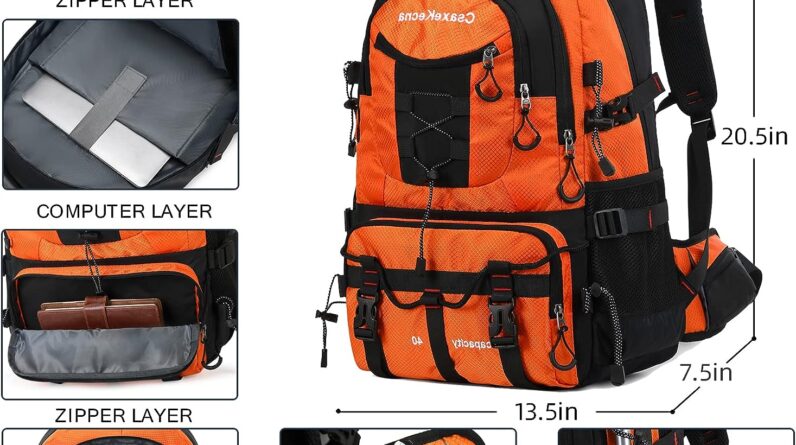
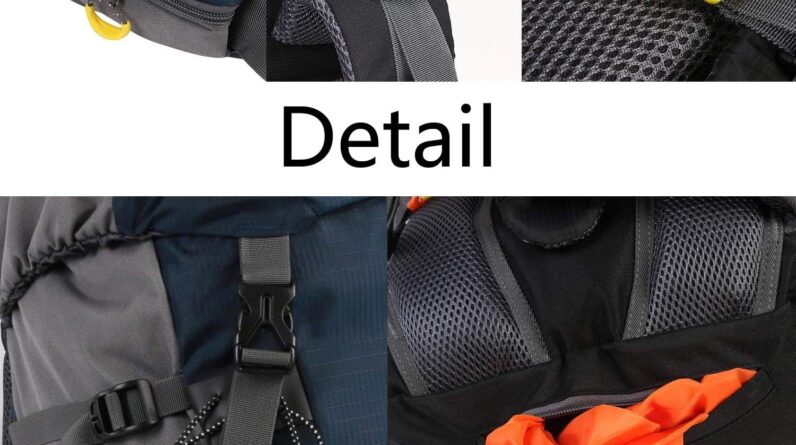
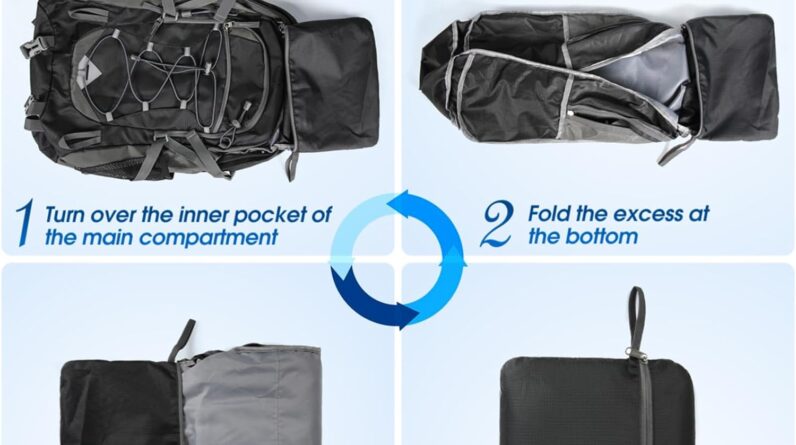
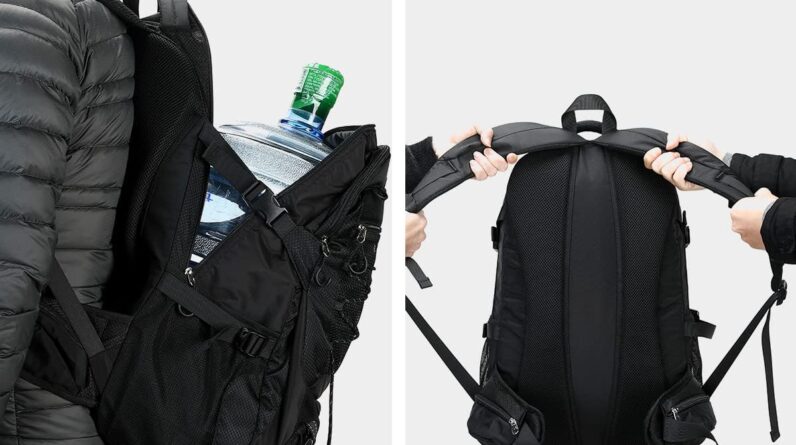
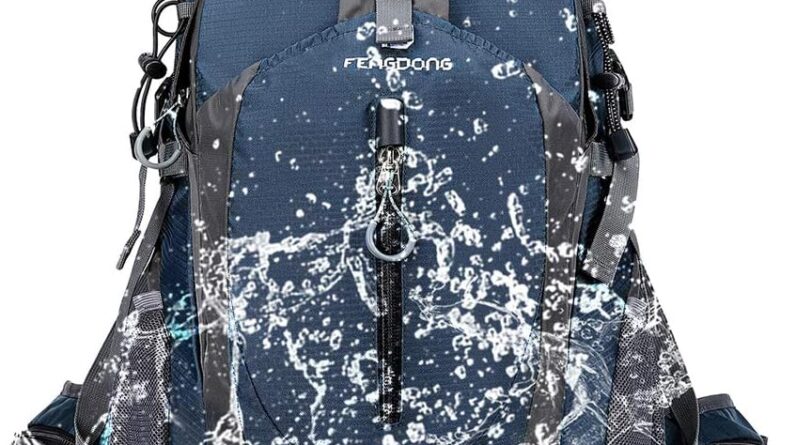
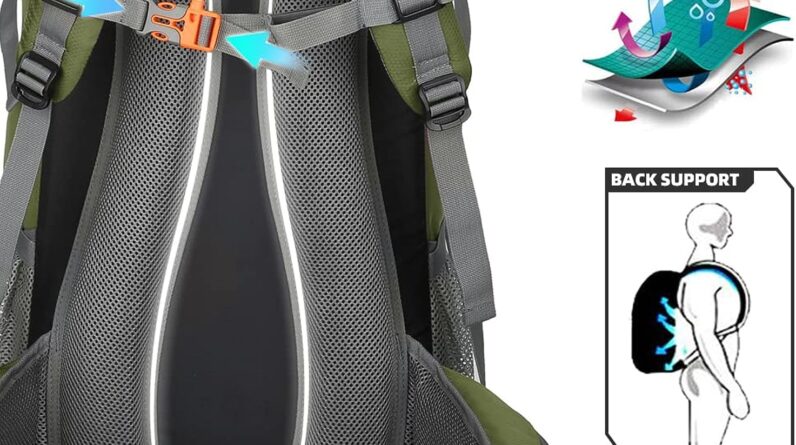
2 Comments